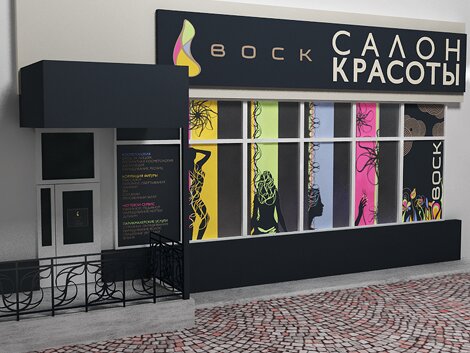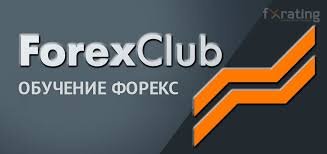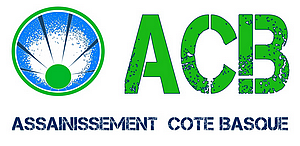Contents

The bid-ask spread can also be stated in percentage terms; it is customarily calculated as a percentage of the lowest sell price or ask price. A bid-ask spread is the difference between the highest price that a buyer is willing to pay for an asset and the lowest price that a seller is willing to accept. On any standardized exchange, two elements comprise almost all of the transaction cost—brokerage fees and bid-offer spreads. The bid–offer spread for securities is the difference between the prices quoted for an immediate sale and an immediate purchase . However, there exists an initial bid that deters the second bidder from paying the investigation cost and entering the auction. The high initial (all-cash) bid signals that the initial bidder has a relatively high private valuation for the target, which reduces rival bidders’ expected value of winning.

All limit orders outstanding at a given time (i.e. limit orders that have not been executed) are together called the Limit Order Book. However, on most exchanges, such as the Australian Securities Exchange, there are no designated liquidity suppliers, and liquidity is supplied by other traders. On these exchanges, and even on NASDAQ, institutions and individuals can supply liquidity by placing limit orders. Bid and ask is a very important concept that many retail investors overlook when transacting. It is important to note that the current stock price is the price of the last trade – a historical price.

Bids on the left, asks on the right, with a bid–ask spread in the middle. In the context of our Next Generation trading platform, the bid and ask prices are represented by ‘BUY’ and ‘SELL’ tickets in any price quote window. The number ‘33.0’ between the buy and sell price represents the bid-ask or buy-sell spread. This spread is derived by subtracting the sell price from the buy price. The bid price, more commonly known as simply the ‘bid’, is defined as the maximum price that a buyer is willing to pay for a financial instrument. , while the ask price is the lowest price a seller will accept for the instrument.
The combined yield spread of 32.5 basis points indicates that the issuer’s effective cost of capital was 32.5 basis points above the yield to maturity the bond realized at its market price. The higher cost was the result of both the underwriting fee and the underpricing of the bond. The offering yield, Yo, is the yield to maturity estimated on the bond’s offer price paid by investors. This is the yield the initial investors expect to make on the bond. The market yield, Ym, is the yield to maturity estimated on the market price of the bond at the close of the first day of trading.
Related terms:
Full BioCierra Murry is an expert in banking, credit cards, investing, loans, mortgages, and real estate. Maintaining independence and editorial freedom is essential to our mission of empowering investor success. We provide a platform for our authors to report on investments fairly, accurately, and from the investor’s point of view.
An escape clause gives the issuer and underwriter the option to withdraw the issue if they face unfavorable conditions. Another measure of liquidity is the market depth with higher depth indicating more liquidity. Market depth refers to the existence of orders to buy and sell at many different prices that are away from the current price of a security. Furthermore, in more liquid markets larger quantities can be transacted at different prices. Therefore, larger market orders can be executed without significantly impacting the price level in more liquid markets.

It is an important factor to take into consideration when https://business-oppurtunities.com/ securities, as it is essentially a hidden cost that is incurred during trading. Conversely, a bid-ask spread may be high to unknown, or unpopular securities on a given day. These could include small-cap stocks, which may have lower trading volumes, and a lower level of demand among investors. Market makers, many of which may be employed by brokerages, offer to sell securities at a given price and will also bid to purchase securities at a given price .
On the other hand, the bid and ask are the prices that buyers and sellers are willing to trade at. In essence, bid represents the demand while ask represents the supply of the security. If all market makers do this on a given security, then the quoted bid-ask spread will reflect a larger than usual size. Some high-frequency traders and market makers attempt to make money by exploiting changes in the bid-ask spread.
Bidding is quite common in the case of art and unique or historical items. Such a scenario will not be possible in the case of an asking price or a seller. In the case of a stock, if one believes that the price is expected to go up, the buyer would buy the stock at a price that he believes is appropriate or fair.
Bid–ask spread
Bids were then ranked by price, with the lowest winning bid price (i. e., the one just exhausting the stock) serving as the unit permit price. The courthouse was built from 1884 through 1885 at a bid price of $11,945. The ask price is the lowest price a seller of a commodity is willing to accept for that commodity. The ask price, usually referred to as the ‘ask’, is defined as the minimum price that a seller is willing to accept for the instrument. Spread bets and CFDs are complex instruments and come with a high risk of losing money rapidly due to leverage. 78% of retail investor accounts lose money when spread betting and/or trading CFDs with this provider.
For instance, when there is a crisis in the market, investors might be unwilling to buy securities at prices above the market threshold. Bid and ask refer to the best potential price that a security – like a stock – can be bought or sold for at a particular time. The bid price is the most that a buyer is willing to pay and the ask price is the least that a seller is willing to accept.

The bid price is the highest price that a trader is willing to pay to go long at that moment. Prices can change quickly as investors and traders act across the globe. Current bids appear on the Level 2—a tool that shows all current bids and offers. The Level 2 also shows how many shares or contracts are being bid at each price.
Transparency is our policy. Learn how it impacts everything we do
A bid-ask spread represents the difference between the highest price a buyer is willing to pay for a security and the lowest price that a seller is willing to sell the security . Bid-ask spreads help determine the prices that investors can buy or sell securities. The security will be more liquid in nature if the difference between the ask price vs bid price is smaller. As the asking price and bid prices are constantly changing, so is the spread. Bid-ask spreads can also reflect the market maker’s perceived risk in offering a trade.
- If a bank has trouble with liquidity or needs reserves, and it cannot borrow from other banks, subsequently, the Fed is the last place to go to ask for a loan.
- The bid is the highest price that a potential investor is willing to pay for a security, and the ask is the lowest price the seller is prepared to accept for the same security.
- Market depth refers to the existence of orders to buy and sell at many different prices that are away from the current price of a security.
- However, the same will not be applicable in the case of the asking price.
Bid PriceBid Price is the highest amount that a buyer quotes against the “ask price” to buy particular security, stock, or any financial instrument. The bid price will almost always be lower than the ask or “offer,” price. The difference between the bid price and the ask price is called the « spread. » On the other hand, when the security is seldom traded , the spread will be larger. For example, the bid-ask spread of Facebook Inc., a highly traded stock with a 50-day average daily volume of 25 million, is one cent. The term « bid and ask » refers to a two-way price quotation that indicates the best price at which a security can be sold and bought at a given point in time.
The difference between the bid price and ask price is often referred to as the bid-ask spread. Forex stands for “foreign exchange” and refers to the buying or selling of one currency in exchange for another. While it is called “foreign” exchange, this is just a relative term.
The bid price, or price a buyer is willing to pay, and the sell price, or the price a seller is willing to sell, are vital to determining the market for an investment. It is also important to institutional investors, such as hedge fund managers, who need to know the spread, especially for less liquid investments where the spread can be greater. The market maker is the one that takes advantage of the ask and bid prices and the spreads between them.
Read our editorial process to learn more about how we fact-check and keep our content accurate, reliable, and trustworthy. One common example that is used to demonstrate a pip value is the euro to U.S. dollar (EUR/USD), where a pip equals $10 per $100,000 traded (.0001 x 100,000). If a bid is $10.05, and the ask is $10.06, the bid-ask spread would then be $0.01. The bid-ask spread can be measured using ticks and pips—and each market is measured in different increments of ticks and pips. If someone wants to buy right away, they can do so at the current ask price with a market order. It is used when a trader is certain of a price or when the trader needs to exit a position quickly.
The start-up capital wants to buy the stock at this price is termed as a bid. In the future, when the prices go up, the buyer now converts into a seller. He will now quote a price to sell in which he believes maximum profit can be made. Small-cap StocksSmall cap stocks are offered by relatively small companies that are publicly listed.
A market maker is a term used to describe the kind of trader who specializes in two-sided deals. They make bids and purchase securities at the quoted ask price and net the difference between the two. They need to be adept at analyzing trends and predicting price changes to be able to make profits from their deals. The bid-ask spread reflects the transaction and inventory costs and the risk of the institution that quotes the price.
This allows the bid-ask spread to act as a marker of a security’s liquidity. Is the price at which a dealer is willing to buy a security while ask price is the price at which a dealer is willing to sell a security. The dealer’s bid price is always lower than his/her ask or offer price so that the dealer can be compensated for “making the market,” i.e., facilitating the trading among investors. The difference between the bid and ask prices is referred to as the bid–ask spread. Factors that determine the bid–ask spread include information asymmetry, inventory carrying costs, and dealer competition. Information asymmetry about the intrinsic value of a security increases the risk that the dealer’s bid–ask spread is not aligned with the “true” price of the security.

